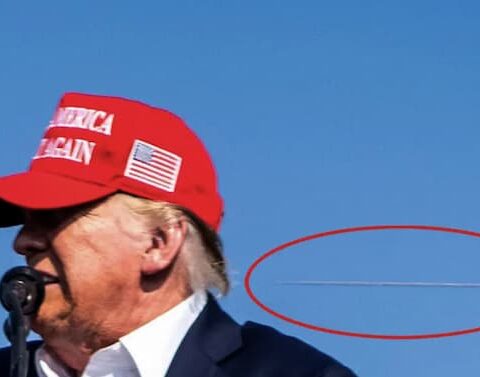If the Jurassic Park films have taught us anything, it’s that bringing dinosaurs back to life could potentially cause one or two itsy-bitsy problems.
That’s only in a worst-case scenario, however.
A renowned paleontologist has claimed for some time to be leading scientific/genetic research that could ultimately lead to dinosaurs being returned to some form of existence millions of years after their extinction.
This extraordinary feat could, he now claims, be possible within five to ten years.
Dr Jack Horner, who in fact was a consultant for all of the Jurassic Park movies, once posited that resurrecting prehistoric life-forms might be accomplished by manipulationg of ancient DNA strands; but scientists at Yale and Harvard are investigating a different route, involving modern chickens.
Chickens, like all birds, are descended from dinosaurs, and significant progress is claimed to have been made in trying to de-evolve modern chickens back into versions of the prehistoric creatures they are descended from.
If all of that sounds like overly imaginative science-fiction, it is worth noting that scientists at Harvard have also recently tried to resurrect the long-extinct woolly mammoth by inserting its genes into modern elephants. See more here.
Some sensationalist coverage might spread scare stories about a giant T-Rex rampaging across modern cities in a Godzilla-like fashion, but recreating creatures as big and powerful as the T-Rex is not likely to be on the agenda, with the emphasis being instead on much smaller dinosaur types.
For the first time, scientists have already created chicken embryos with broad, Velociraptor-like muzzles in the place of their beaks.
While some argue that any attempt to recreate extinct species should be regarded as a non-priority or even as unethical, Horner and others argue that the research involved in designing a ‘chickenosaurus’ could just as easily lead to various medical and scientific breakthroughs.
Research into factors that influence embryonic tail growth, for example, could lead to new treatments for spinal disorders, and Horner has also suggested that the research could yield other important applications in regard to cancers and other illnesses.
Scientific discovery of course doesn’t just work in a linear fashion, but often important discoveries are made via osmosis, and research into one area can potentially create unintended breakthroughs in an unrelated field.
Also, the ‘playing God’ complaint that often crops up in opposition to research of this kind falls mostly flat too, as we are *always* playing God. Trying to cure someone’s disease is ‘playing God’; even mouth-to-mouth resuscitation is ‘playing God’.
That said, as exciting a prospect as it is to think of some day seeing a real-life Stegosaurus or a back-from-the-dead Woolly Mammoth (taking my own pet Brontosaurus for a walk has always been a fantasy), there are genuine questions about the wisdom or usefulness of trying to restore long-extinct life-forms to existence, particularly the question of whether it warrants significant scientific study or resources at a time when there are more urgent scientific and medical problems that need to be worked on in this day and age.
In this 2013 piece from National Geographic that explores the scientific community’s pros and cons for ‘de-extinction’, Jamie Shreeve sums up our (or my, at least) uncertain and conflicting feelings on the matter; ‘It’s hard to put your finger on exactly why de-extinction is so inherently exciting a concept, irrespective of any tangible benefit it may—or may not—have,’ he writes. ‘Perhaps the excitement derives from the chance it affords to travel back in time and glimpse marvelous creatures from a world that no longer exists. Or maybe it’s the thrill of cheating death, of reversing the ultimate irreversible‘.
The God of Star Wars, George Lucas, has funded most of the cost of the chickenosaurus project so far, with the final cost expected to be fairly low.
Lucas’s involvement is a somewhat pleasing bit of resonance, as he was one of the executive producers of that beautiful, dinosaur-based 1988 animated film The Land Before Time (which was, fittingly, where my own love affair with dinosaurs and prehistoric wildlife probably began; if you’ve got kids, introduce them to that film – I get goosebumps just remembering it).
___________________
Dr Jack Horner discusses this highly interesting, if controversial, work, along with various other matters, in this video.
___________________





I personally have never had any desire to see a real live dinosaur so I’m on the side of those who say: stop wasting time, money and other resources on recreating the past and instead stop further extinction of what we have now. We doom our eco system to disaster and herald our own extinction unless we do all we can to prevent the loss of some critical species today. We can create all the dinosaurs we want but if we mess up the delicate eco system we rely on for survival we may not be around long enough to see the results of this type of research.
I take your point and I probably feel that way too – depending what day it is and what my mood is; other times, I can’t help but get excited by these kinds of things.
I will say, however, that in terms of ‘preventing loss of some critical species today’, as you refer to, this work could actually be very important. If today’s scientists were to perfect the genetics, the scientific methods and the ways to bring back extinct species, then species that are endangered NOW or become extinct tomorrow could be revived in the future.
In terms of contemporary endangered species and even the damage to eco-systems, etc, the case could be made that we’ve messed up too badly already to fix it – but scientific breakthroughs that enable science to revive or restore living things to a past or healthier state could mean we could one day reverse all the damage.
That’s just how I’m seeing it; your reaction is equally true, however – both cases can be argued convincingly.